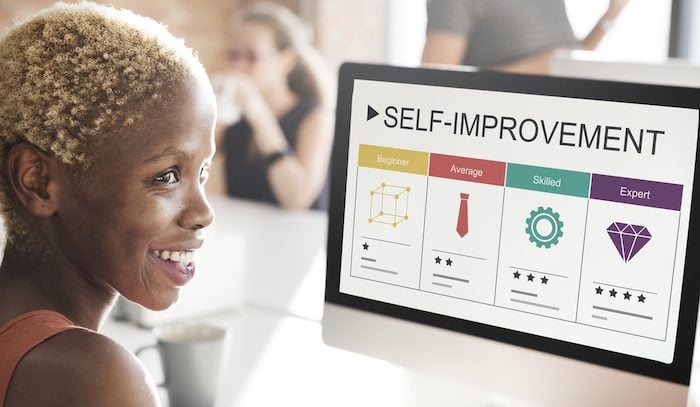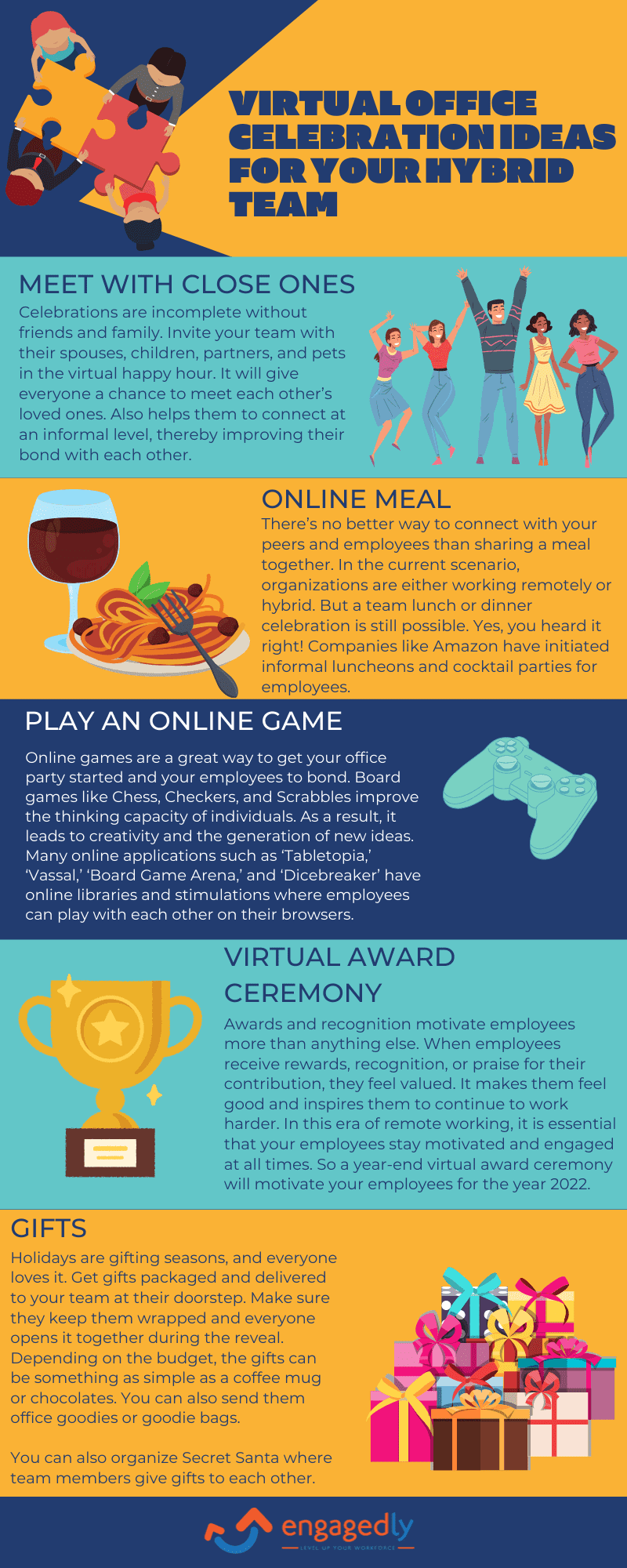Performance evaluations are crucial for any organization since they assist in determining an employee’s contribution and an appropriate level of compensation for his efforts, such as a pay raise or promotion. Effective quality assessment techniques also assist businesses in determining where their employees stand in terms of their skills, talents, and potential flaws.
What is an annual performance review, and what does it entail?
The ‘annual performance evaluation‘ process is vital to an organization to measure productivity and develop ways to achieve better results.
Performance assessments are conducted in the form of a ‘yearly performance review’ or a ‘quarterly performance review,’ in which an employee’s overall performance and output are assessed against a set of clearly defined standards.
Performance management is indispensable not only because it determines an employee’s salary increase and promotion, but also because it correctly assesses an employee’s abilities, strengths, and weaknesses.
Traditionally, performance evaluations happened once a year and were primarily concerned with analyzing prior performance. Modern performance evaluations take place once a year, quarterly, or monthly, with the goal of driving and enhancing future employees’ results.
Also read: 10 CHARACTERISTICS OF THE MOST EFFECTIVE PERFORMANCE MANAGEMENT SYSTEM
Traditional Performance Appraisal Techniques
Here are some of the common traditional techniques:
- Appraisal through an essay.
- Ranking Methodology.
- Checklist Methodology.
- Comparative Analysis.
Since traditional annual performance review uses a point-based or rank system to assess an employee’s contribution, it fails to capture the overall performance and productivity of an employee, which are based on many other parameters too.
Modern Performance Review Techniques
Due to the shortcomings of traditional evaluation techniques, modern performance review techniques were created. It focused on all possible parameters to capture the overall performance and productivity of an employee. Some of the parameters that made it stand out were:
- 360 Degree Feedback
- Establishing Objectives
- BARs
- Checklist Methodology
- Assessment Center Methodology
Let’s have a look at how these various annual performance review techniques and their usefulness.
Methods for Conducting Actionable Performance Reviews
Organizations may improve employee performance by using the appropriate performance evaluation approach. In fact, a smart strategy for evaluating employee performance may make the entire process more efficient and enjoyable.
So here’s a closer look at some of the most popular modern performance techniques.
1. 360 Degree Feedback:
Known to have originated in 1930, 360 degree feedback is a multifaceted performance assessment system that assesses an individual based on input from their circle of influence, which includes supervisors, colleagues, customers, and direct reports. This strategy will not only remove prejudice in performance assessments, but will also provide a clear picture of a person’s abilities.
The following are four essential components of this evaluation method:
- Self-evaluations:
Employees may use self-appraisals to reflect on their performance and identify their strengths and limitations. Self-appraisals without defined forms or formal processes might become liberal, indecisive, and prejudiced.
- Managerial evaluations:
Managerial performance evaluations are a conventional and fundamental method of assessment. These evaluations must contain supervisory assessments of individual employees as well as senior managers’ evaluations of a team or program.
- Peer evaluations:
Peers are the most relevant evaluators, as they are the ones with whom one works with closely. These evaluations aid in determining an employee’s capacity to work effectively with others, take initiative and contribute consistently. Peer camaraderie or enmity, on the other hand, may skew the final judgment findings.
Also read: THE IMPORTANCE OF PEER FEEDBACK AT WORKPLACE
- Testimonials from customers or clients:
Internal customers refer to product users inside the business. External customers are not employees of the organization but they maintain contact with an individual employee of the company on a regular basis.
Customer evaluations may help assess an employee’s production more accurately, as they may offer an impartial view.
360 degree feedback has a number of advantages
- Acts as a platform for the activities such as mentoring, counseling, and professional development.
- Encourage people to engage in their knowledge growth and to accept change.
- Integrate performance feedback within the company culture to increase employee engagement.
Also read: 360 DEGREE FEEDBACK: BEST PRACTICE GUIDELINES
2. Setting goals using the MBO and OKR methods
- Management by Objectives (MBO).
In its most basic form, Management By Objectives is a way for establishing objective-based goals. Employees and management work together to accomplish objective-based goals. Management and the employees address and re-examine these objectives from time to time.
This employee performance evaluation technique is further divided into four parts:
- Setting objectives: The management and the employees discuss what objectives they need to establish.
- Standard of performance: This is the benchmark that defines how to achieve these objectives. To put it another way, to what extent must these requirements be fulfilled in order to attain the set objectives.
- Comparison: A comparison is made between the time the objectives were established and a certain period in the future, such as three or six months. Managers and employees can both observe the improvements that have occurred.
- Review on a regular basis: Employees and management meet to discuss the employee’s progress. The next step is to inform the employees on what aspects they need improvement. It also involves discussing which targets have been achieved or surpassed, and how to attain the objectives.
Also read: SETTING OKRs FOR SUCCESS IN 2022
- The OKR (Objectives and Key Results) Methodology
Objectives and Key Results (OKR) is a prominent goal-setting methodology that helps businesses to establish and execute strategies efficiently.
The framework has many advantages, including a stronger emphasis on important goals, more openness, and improved (strategic) alignment. OKR does this by focusing employees and their efforts on accomplishing a set of shared goals.
An OKR comprises:
Objectives: Objectives are like future goals. Objectives guide employees toward the goals to be achieved in a certain period of time. An Objective determines the course of action, much like a map’s goal. Objectives should be non-technical and devoid of metrics to ensure that everyone knows where they are going.
Key Results: A Key Result is quantifiable and must be achieved in order to meet the Objective. It includes a statistic that has a start and end value.
Key Results track the progress of an employee toward the objectives, acting as a beacon indicating how near you are to achieving your goal. In simple words, these are the results that employees need to accomplish to reach the set objectives.
The term “Initiative” refers to all the measures and activities that will assist employees in achieving the Key Results.
The framework contains a set of guidelines that employees may use to prioritize, align, and track the results of their activities.
OKR assists organizations in creating a link between strategy and execution, allowing them to shift from an output-based to an objective-based work style.
Check Out: OKR CONSULTING, TRAINING AND CERTIFICATION
3. Behaviorally Anchored Rating Scales (BARS)
Behaviorally Anchored Rating Scales assess an employee’s performance-related behavioral attributes. Each statement or question comprises sub-statements that explain the employee’s conduct in a particular situation. A successful BARS evaluation method is made up of several parts:
Identifying Critical Cases: It is necessary to identify a group of behaviors or important situations that have an influence on the entrusted job.
Performance Dimensions: Various performance characteristics, such as actions that affect a specific aspect of the employee’s function, are compiled.
Measurable Scaling: Analyze improvements in behavior as per a scaling system. Employees’ strengths and weaknesses may be assessed by comparing their results on these measures.
4. Checklist Methodology
This employee performance evaluation technique is not as time-consuming as many other standard methods are. It is a popular strategy since it saves time and compares all employees on the same set of criteria.
A set of questions is given to the managers. The questions might be yes/no, multiple-choice, or statements. The responders might next indicate their level of agreement with that statement.
5. Assessment Center Methodology
The German Army first developed the idea of an evaluation center in 1930, but it has since been refined and adjusted to match today’s environment. Employees may receive a clear view of how others see them and how it affects their performance using the assessment center technique. The key benefit of this approach is that it can not only measure an individual’s current performance but also anticipate future work performance.
Advantages of an Annual Performance Review
Completing performance assessments on a regular basis may help businesses to share areas of improvement with the employees to enhance performance and productivity. The following are some of the advantages of performing an annual performance evaluation:
Creates opportunities for advancement in your career:
Employees’ career paths may improve with the aid of performance reviews, especially if they want to rise to a higher position within the organization. A frequent assessment may act as a guiding force to the employees.
Enhances efficiency:
Giving feedback encourages employees to compete better. When a manager gives anticipated comments to the employees, they are more motivated to perform better. Due to the fact that performance assessments are associated with incentives, they may help motivate and reward employees for their efforts.
Enhances employee engagement:
Employees perform better when they can understand how their activities influence the organization as a whole. Frequent performance reviews also demonstrate to employees that their manager values them and is willing to invest time in their development. This way, there is a high scope that an employee would prefer to work with an organization for a long duration of time.
Also read: DO THESE 8 THINGS TO IMPROVE EMPLOYEE ENGAGEMENT
Assists in determining training:
Companies may use performance assessments to discover which employees need more training and to choose areas for training purposes. Employers can help employees meet daily goals by providing workshops on productivity or by lowering the target quota.
Expectations are clarified:
Managers might restate their expectations for an employee during the annual performance review. This aids individuals in comprehending their everyday work tasks as well as what their employer expects of them.
Smooth flow of conversation:
Performance assessments provide managers with a scheduled and defined period to review how each employee is performing overall. Managers may coach employees and provide recommendations on how to enhance their performance during these sessions.
This time turns out to be an ideal period for a smooth flow of conversation, with no interruptions, between the two parties. Also, employees can ask questions and address any issues they have during this period.
Assesses objectives:
Employers may assess how effectively an employee met their objectives and offer inputs on what objectives to be set for the next cycle. Establishing a goal-setting system that is updated on a regular basis ensures that employee is developing and contributing to the organization’s overall purpose.
Documentation:
Managers may monitor an employee’s progress and performance by keeping a record of their work over a certain period of time. Organizations may save each employee’s documents in a personal folder for further inspection. This allows higher management to keep a track of an employee’s performance with whom they may not have frequent contact. In the present day, organizations use performance management software to store historical data on employee’s performance.
Identifies improvement areas:
Employers who conduct performance reviews on a regular basis may identify areas of improvement on time and fix them. This is necessary before the shortcomings have a negative impact on the organization.
Strengthens Team Bonding:
Managers and employee may use performance assessments to align their goals and brainstorm together. Meetings on a regular basis might help to strengthen ties and make the employer look more accessible. Peer evaluations allow employees to know how much their colleagues value them.
Also read: TIPS TO MANAGE STRESS OF REMOTE TEAM
Positive reinforcement:
Employees often lose sight of why they work or how an individual’s efforts contribute to the success of the organization on a day-to-day basis. Employees may be apprised of their contribution during the evaluation process. The positive feedback would motivate the employees to better their performance and productivity.
Assessing the right direction:
Employees may ask managers questions about ongoing projects and obtain further advice or direction during an annual performance review.
Conclusion
Choosing the correct performance assessment techniques has become more important in today’s world. The reason is that it indicates an organization’s attitude toward its employees and how concerned the organizations are about their employees’ confidence, performance, and productivity.
In line with this, technology can be a useful tool to reduce the overwhelming tasks of performance review. With an appropriate annual performance evaluation tool in hand, organizations no longer need to spend hours developing and implementing performance assessment procedures. To put it in simple words, technology has evolved to an extent, where it can handle and assess the performance of the employees, based on certain criteria.
Want to know how Engagedly can simplify your annual performance review? Request for a live demo from our experts.
















![5 Virtual Office Celebration Ideas[Infographic]](https://engagedly.com/wp-content/uploads/2021/11/virtual-office-celebrations-e1638256911707.jpg)








![Dealing With Workplace Stress[Infographic]](https://engagedly.com/wp-content/uploads/2021/11/employee-coping-with-stress.jpg)



